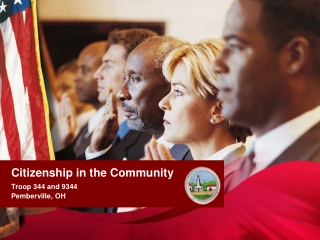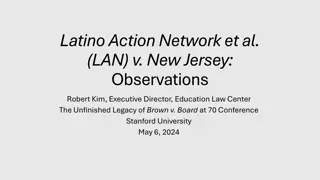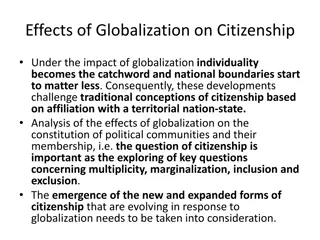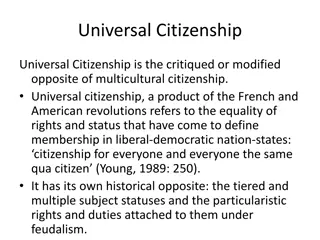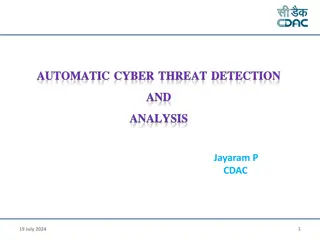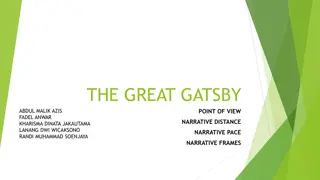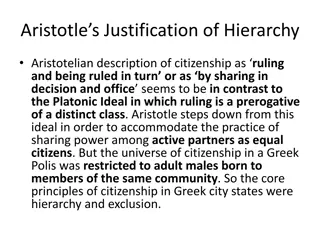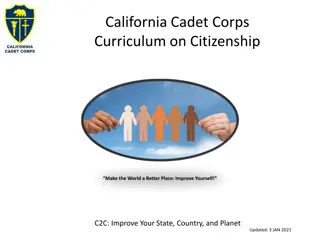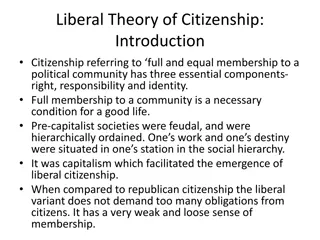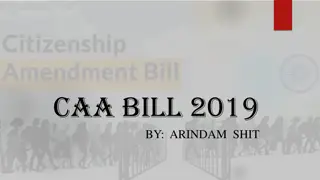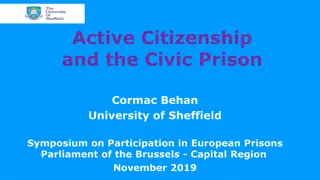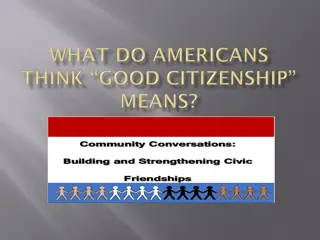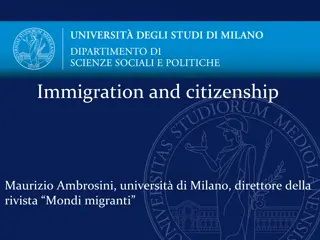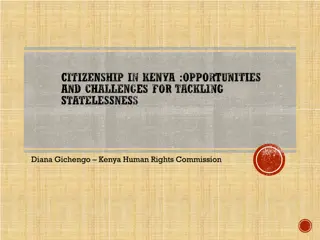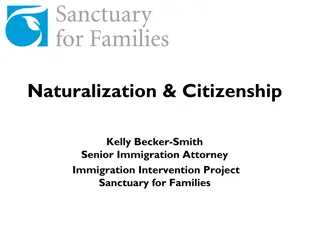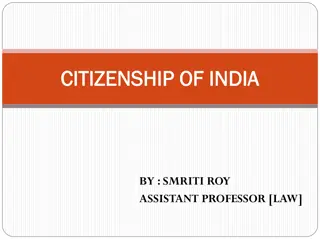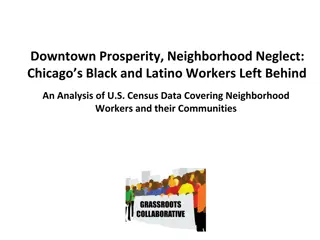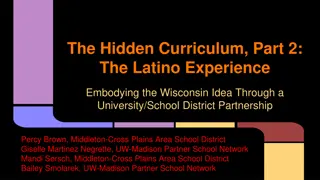Latino Threat Narrative & Citizenship
Positing that Latinos differ from past immigrant groups, the Latino Threat Narrative explores the media's role in shaping negative perceptions of immigration. From debates on immigration policy to the portrayal of immigrants in the media, this narrative sheds light on the challenges faced by Latino communities in the US.
Download Presentation

Please find below an Image/Link to download the presentation.
The content on the website is provided AS IS for your information and personal use only. It may not be sold, licensed, or shared on other websites without obtaining consent from the author.If you encounter any issues during the download, it is possible that the publisher has removed the file from their server.
You are allowed to download the files provided on this website for personal or commercial use, subject to the condition that they are used lawfully. All files are the property of their respective owners.
The content on the website is provided AS IS for your information and personal use only. It may not be sold, licensed, or shared on other websites without obtaining consent from the author.
E N D
Presentation Transcript
The Latino Threat Narrative: Citizenship and Belonging December 5, 2019
Important Dates Dec 13 Dec 15- Deadline for SRTEs Dec 17- Final papers due @ 5pm via CANVAS Dec 12- Exam 2 Extra Credit Written Response Portion of final paper Outline of final paper Reflection on course content
How does Leo Chavez define Latino Threat Narrative? What role does the media play in the construction of this narrative? Reading Engagement Quiz What are the four types of citizenship Chavez references? Name one example Chavez explores in his book to understand the relationship between citizenship and The Latino Threat Narrative.
The Latino Threat Narrative posits that Latinos are not like previous immigrant groups, who ultimately became part of the nation (p. 3) The Latino Threat Narrative falls into a larger history of discourse about immigration and their perceived negative impacts on society (p. 4) The German language threat Catholic threat Chinese and Japanese Immigration threat Eastern European threat Extends beyond Latino immigrants Relatives and family members Chavez argues Systemic Intertwined with construction of citizenship Driven by media discourse Latino Threat Narrative
Narratives and Spectacle Debates over immigration, citizenship, and national belonging are informed by the events we witness through the media s representation of immigrant spectacle, whether they are promoting concern for the plight of immigrates or anti-immigration events (p. 6) Shifts world view and results in the objectification of Latino immigrants and in a broader sense of US born Latinos. Advertisements portray Latinas as objects (beer bottles) not human beings. Immigrant marches as chaotic, rather than social movements Foreigners , aliens , illegal alien , immigrant
Immigration policy Media spectacle and discourse on Latinx immigrants becomes more prevalent when debates on immigration policy Chavez highlights different legislation 1965 1986 Immigration Reform and Control Act (IRCA) Amnesty Increased number of visas granted 500,000 to 700,000 Increase of European migration 2005 HR 4437, Border Protection, Antiterrorism and Illegal Immigration Control Act Get tough attitude 2006 discussion of DREAM Act
CITIZENS AND NONCITIZENS What does it mean to be a citizen?
Legal Four Types of Citizenship Rights Political Activity Identity/Solidarity
The Case of Jesica Santillan Born with a defect in her heart and lungs Her family crossed the border. It is unclear if she obtained a humanitarian visa. Jesica waited three years prior to receiving a new heart & lungs First transplant was a failure Received a second set of organs, but it was too late. She had to be taken off of life support.
So What? Reactions from the reading? Although we have only read the introduction, do you buy Chavez s argument? What are some contemporary examples we can use to deploy Chavez s framework? Are there any critiques of Chavez we can posit?



